Wang Chuan’s Abstract Painting: A Contemporary Expression of Chinese Zen Ink Painting
Yue Zhaomin
Sichuan Academy of Social Sciences
Shi Chenggang*
Sichuan University
Abstract: “Zen ink painting” is the art school formed under the confluence of the sectarian “Zen” and the Chinese traditional art form “ink painting” after Buddhism was introduced to China. It emphasizes the belief that Buddhism practitioners could reveal their inner feelings with the aid of ink painting, which was so popular that it not only flourished in China but also spread to and became prevalent in Japan, the Korean Peninsula, and the rest of East Asia. In contemporary times, Zen ink painting is being rejuvenated with new vitality by numerous artists, of whom Wang Chuan is a leading figure. With the method of qualitative research, we conducted an image analysis of Wang Chuan’s works in the 21st century and thoroughly analyzed the creative process and display of his artistic expressions to provide a glimpse of the contemporary form and inner logic of Chinese Zen ink art.
Keywords: Wang Chuan, Zen ink painting, Buddhism, abstract painting
Introduction
Since its introduction to China, Buddhism has been integrated with local Chinese culture in all aspects. Under the influence of Buddhism, Chinese art has been enriched with a unique art form-Zen ink painting. Zen ink painting is the art school formed under the confluence of the sectarian “Zen” and the traditional Chinese art form “ink painting” after Buddhism was introduced to China. It emphasizes the belief that Buddhist practitioners could reveal their inner feelings with the aid of ink painting, which was so popular that it not only flourished in China but also spread to, and became prevalent in Japan, the Korean Peninsula, and the rest of East Asia.
The art of “Zen ink painting” can be traced back to the middle and late Chinese Tang Dynasty (AD 618-906), when Zen poetry and painting came to be integrated. It is recognized that the great scenery poet and painter Wang Wei①Wang Wei (701-761) was a famous poet and painter in the Tang Dynasty. Wang, who was hailed as the “Buddha of Poetry,” created more than 400 poems, including masterpieces such as the “Lovesickness” (Xiang Si) and the “Autumn Night on the Mountain” (Shan Ju Qiu Ming). His works were mostly included in the Wang Youcheng Collection (Wang Youcheng Ji) and the Secret of Painting (Huaxue Mijue).of the Tang Dynasty started the creative art form-Chinese Zen ink painting. Wang Wei was proficient in Buddhism and was greatly influenced by Zen, so much so that he gave himself the penname Vimalakirti, after the Vimalakirti Sutra, the central figure of the Buddhist sutra. Moreover, Wang Wei became a devout Zen Buddhist in his old age. Hence, in his paintings, the landscapes and scenes carry the meaning of Zen, highlighting the feelings of leisure, freedom, and satisfaction.
In addition to the historical-artistic practices in ancient China, some modern Buddhist practitioners and scholars also believe that Buddhism itself has something in common with ink painting. Suzuki Teitaro Daisetz,②Suzuki Teitaro Daisetz (1870-1966) was a world Zen authority and a famous Japanese Zen researcher and thinker. He has made many trips to the United States and to various European countries to teach and speak. Suzuki's biggest contribution to Zen lies in the editing and translation of Zen works, and the linking of Zen with science and mysticism in his own works on Zen to arouse a general interest in Zen in the West.a Japanese Buddhist scholar, in his workthe Zen and Japanese Culture, concluded that the spirit of Zen and the spirit of ink painting are essentially consistent and that they are transcendental and self-contained. Suzuki also pointed out that both the satori and the spirit in ink painting are perceived through intuitive experiences (Yu, 2010). Yashiro Yukio, a Japanese academic, art historian and critic, also believes that the spiritualism of Zen stipulates strict sensory inhibition and pursues the state of a peaceful mind. The pursuit of this sensory inhibition and the ultimate spiritual purification and excitement has undoubtedly exerted a huge impact on the art field of sensory expression.③Yashiro Yukio (1890-1975) was a Japanese art historian and art critic. He was a professor at Tokyo Fine Arts School and Director of the Institute for Art Research in Tokyo. He is the author of The Characteristics of Japanese Art, Ink Painting, etc.
The Origin of Wang Chuan’s Zen Ink Painting Art
In contemporary times, Zen ink painting has been rejuvenated with new vitality by numerous artists, of whom Wang Chuan is a leading figure.
Wang Chuan is one of the important artists of contemporary Chinese art. He became famous for his realistic oil paintings in the early 1980s. Since 1985, he turned to abstract art. In the late 1990s, Wang Chuan suffered from a serious disease and began practicing Buddhism, which brought him wonderful experiences and helped him recover. Moreover, he found himself being artistically “enlightened.” Buddhist insights propelled the transformation of Wang Chuan’s artistic expression and elevated his artistic creation to a new level. Thereupon, his paintings became creations of his individual spiritual transformation. Therefrom, Wang Chuan embarked on the road of Zen ink painting, and is constantly experimenting with different medium materials and various spatial compositions to expand the possibilities for Zen ink painting expressions.①Wang Chuan’s artistic creation has been included in the works of many Chinese art critics (such as Gao Minglu, Li Xianting, Wu Hong, Lu Peng, and Pan Gongkai), and Western critic Robert Morgan. Wang Chuan’s works are widely collected by major international and domestic galleries, art institutions, and private collectors.Judging from Wang Chuan’s amazing artistic history, he had genuinely been a pioneer artist with no experience of Buddhist practice before his illness. Only later did the pioneer artist gain a dramatic transformation. He gradually gained fame in the Chinese art circles for his remote, abstract Zen painting. From this transformation, we try to explore the harmony of Wang Chuan’s personal spiritual practice and his artistic creations.
In 1998, Wang Chuan experienced a near-death experience during gastric cancer surgery. This dramatic experience made him realize the impermanence of life and the mystery of biological phenomena. In this context, he began practicing Zen with Buddhist monks in 2001. Wang professed that he had benefited greatly from Buddhism as it helped him recover from a deep depression. Moreover, Buddhism influences helped him to change his views of the world and of life. Wang Chuan stated, “In the autumn of 2002, I came across a monk in the Pokala Mountain in Nepal. We looked up at the Fishtail Peak (Machapuchare) in the Himalayas, and then he began enlightening me, ‘The world itself is not bad, but the way we realize it is wrong. It is not the phenomenon but your persistence in the phenomenon that throttles you.’” During a visit to India, Wang Chuan had an inspiring realization, “Once I saw, on the ghats of the Ganges, young people were eating and drinking, singing and dancing, while nearby, funeral directors were measuring the body and calculating the volume of wood for the cremation. I witnessed the joy of life and the emptiness of death standing side by side, from which, I gradually perceived what Buddha means in emptiness. Another time when I was in Kathmandu, I met a woman who was a blood cancer patient from China’s Taiwan and who had been there for more than ten years. After learning about my experience, she placidly talked with me about the meaning of life and introduced me to her fellow practitioners there. They were indeed masters with a lot of attainments and deep insights into life. I can hardly recall what exactly they said to me, but only the peace and joy of life epiphany. I may not say that these two experiences have influenced my artistic view, but I would say that they have changed my view of life, liberated my mind, and have contributed a peaceful charm to my works.”
The Mental Journey and Characteristics of Wang Chuan’s Zen Ink Painting
As Wang Chuan stated, Buddhism did not directly change his artistic view, as Buddhism does not tell “what subjects should be chosen for painting, what subjects should not, or how they should be painted.” Instead, Buddhism has fundamentally reshaped Wang Chuan’s soul. As painting is a trace of the soul, the influences cast by Buddhism are reflected in Wang Chuan’s art and were manifested over time.
The first period of Wang Chuan’s artistic transformation was the period of self-examination. Since 2002, Wang Chuan’s paintings have been reflecting and displaying his inner world, and the ink elements in his works reveal his feelings and emotions. The Buddhist way of perception and introspection gives perceptual and intuitive characteristics to his paintings, which means that fewer pictorial signs and logical implications are contained in his paintings. Instead, his paintings resonate with the audience in a straightforward way. Wang Chuan’s focus on and depiction of the inner world are consistent with Arthur C. Danto’s claim that “art is the externalization of the soul of the artist.”①Arthur C. Danto (1924-2013) was a famous modern philosopher, art critic, as well as Johnson Lecture Professor Emeritus at Columbia University. His representative works include After the End of Art: Contemporary Art and the Pale of History and What Art Is.
In the early stage of the selfexamination period, the Buddhist practices guided Wang Chuan to observe his mental process. Yashiro Yukio (1992) believes that Zen art can help purify the delineation of objects and simplify the composition in painting. Through the enlightenment of Buddhism, Wang Chuan’s depression improved, and his delicate innermost being as an artist was embodied in his paintings. This is evident in his works done between 2002 and 2005, which, compared with those done in the 1990s, are more delicate and concise. At this stage, Wang Chuan’s brushwork was transformed from manic venting to controlled dispersion, and his drawing technique of released sprinkling was replaced by a rhythmic outline. There is no narrative, no recognizable image, only a soft spilling of emotions in his paintings, which can be perceived, just as Yu Jinyu (2010) said, “Accurately expressing their own mood is the essence of ink painting.”
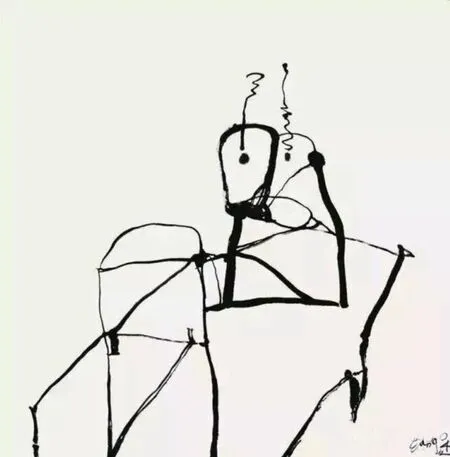
Figure 1. Wang Chuan: Untitled A2, 69cm×69cm, ink on paper, 2004
During the second stage of Wang Chuan’s self-examination period, the practice of Buddhism led him to introspection. The memory of “death experiences” made it difficult for him to find peace in his heart. By way of introspection, thinking about life began to emerge as a theme of his paintings. At the same time, he began to apply the techniques and concepts of Zen ink painting to oil painting, trying to break through the limit of ink painting media. This is aptly reflected in his works done between 2005 and 2006.
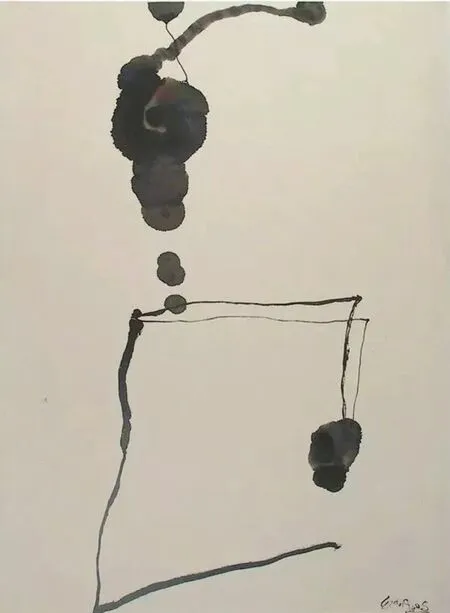
Figure 2. Wang Chuan: WC-411, 100cm×69cm, ink on paper, 2005
Wang Chuan’s inner transformation cannot be a lone case. Cy Twombly’s case is similar to Wang’s.①Cy Twombly (1928-2011) was one of the most influential artists in the second half of the 20th century. He has settled in southern Italy since 1957. His works are mostly known for his large scrawl and application of unusual materials, and his abstract works combine the techniques of drawing and sketching, using repetitive lines, vocabulary, and graffiti, and usually selling for millions of dollars at auction grounds. In 1996, he won the Praemium Imperiale, the country’s most noble and prestigious art award. In 2001, he received the Golden Lion Award at the Venice Biennale. In 2010, Twombly was invited to create murals for the Louvre, becoming the third contemporary artist to create a permanent collection for the Louvre.“The strength of memory that is left behind” were Twombly’s last words. Richard Kalina (2017) believes that this power was also the way of Twombly’s painting. “To involve yourself deeply in the past is to position your art in the realm of memory, and with that come the distortions, lapses, and unexpected connections that memory is prone to.” Also, Twombly purposefully applied literary and historical references in his work. “Abstract Expressionist painters before Twombly intended to present the form directly to the audience. Twombly is different. He explicitly used those references in his works, letting his abstract paintings self-clarify their cultural orientations through recognizable symbols, such as words and graphics, and thereby directing the theme of his works into the field of ancient Greek culture, which is representative of classic culture.” (Chen & Qu, 2017)
The depiction of “death experiences” has been tried repeatedly in modern art history. “Yuichi Inoue’s calligraphy conveys a sense of explosive shock, as well as a sense of self-denial and selfreduction” (Qiu, 2016). This feature was oriented in the death experience of Yuichi Inoue.①Yuichi Inoue (1916-1985) was a representative Japanese artist of the late 20th century. He has received attention and acclaim in the Western world for his selfcreated “explosive calligraphy.”Yuichi Inoue witnessed the Second World War and in 1945 he experienced “death” for seven hours in the Bombing of Tokyo. When he was resuscitated, he found himself buried in dead bodies and debris, which branded a deep scar on his heart. It is no wonder that the artist thereby got a sense of fleeting danger and a sense of tragic ephemera. In the view of Masaomi Unagami (2008),②Masaomi Unagami, born in 1931, is an art critic. In 1974 he established the art studio UNAC TOKYO and the art fans association June Wind, engaged in publishing art books, making art documentaries, and holding exhibitions and other activities.Yuichi Inoue’s calligraphy tends to retain, in his works, his rare experience of suspended animation in the Bombing of Tokyo. Thereupon, Yuichi Inoue’s calligraphy always conveys a sense of the proximity of agony. His rational introspection of death, with awe and solemnity, was melted into his calligraphy through his passionate pen and ink. In calligraphy, Yuichi Inoue does not bow to death, but conveys shock to the viewers with his stout courage. Therefore, Yuichi Inoue’s works possess tremendous momentum. Masaomi Unagami (2008), at the very first sight, recognized this, “Only Yuichi Inoue’s works bulge out of the wall and catch my eyes.”
On the same road of art, Wang Chuan has paid tribute to and overstepped the two artistic predecessors. He is connected with Twombly through the emotional way of artistic creation. “Use every moment of life to transform the innermost being” (Zhou, 2008), said he. Both Wang Chuan’s meditation on death and his Buddhism practice settled in his inner life, which may be manifested in his works as long as the settled inner elements are activated by an endless emotional passion. Thus, Buddhist terms and expressions frequently show up in Wang Chuan’s works. When quoting Buddhist terms and expressions, Wang Chuan ceases to be an artist and emerges as a “sentient being”-the object of the Buddha dharma. The walking-off of the artist is in exchange for the sublimation of his artistic works. In Wang Chuan’s paintings, the abstraction and simplicity of the picture are in a silent confrontation with the profound connotation and awakening of Buddhist literature. It is this confrontation that highlights the tension in his art, from which we can see his efforts in trying to break the boundaries of painting and to convey his own ponders, which are about life and are also part of Buddha dharma, through his works.
Second, in his understanding of death, Wang Chuan does not fully agree with Yuichi Inoue. Wang Chuan followed the Buddha’s teaching, and thus felt no pain or anger at death after accepting the impermanence of life, feelings he regards as a gift. “Death experience is a tragedy for ordinary people, but for the artist, it is a tragic gift.” Thanks to such unperturbed thoughts, the spirit of his paintings is more soothing, and the content and form are also purer and more concise. The runnings of lines in his ink works convey ineffable thoughts, fleeting emotions and feelings still fresh in memory. His rational introspection of death is with awe and solemnity. As a result of Wang’s calm acceptance of death, the spirit seeping into his works is quite calm. Hence, while judging Wang Chuan’s works, it is important to be aware that his works are beyond the application of techniques and convey a spiritual meaning.
Because Wang Chuan integrates his deliberations on the common issue of “death” for all mankind into his artistic creations, his works acquire the value of a consistent and powerful theme. “A philosophical thought or an artistic piece expresses not only the author’s thoughts or feelings, but also the common psychological state of a nation, an era or a society, and the shared cultural value. The better it depicts, the higher values it possesses” (Gao, 1997). This way to elevate art to a philosophical level resonates with Danto’s interpretation of the art after “the end of art”: The art in an era of philosophical introspection (Danto, 2007). Furthermore, the connection between art and philosophy also confirms the inheritance of classical Chinese aesthetics in Wang Chuan’s ink painting (Gao, 1997).
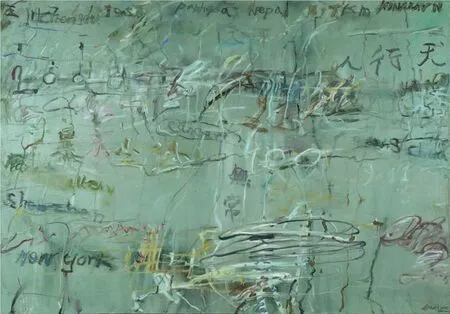
Figure 3. Wang Chuan: M Pedestrian Bridge, 140cm×200cm, canvas oil painting, 2006
Wang Chuan came into his second period of transformation-a period of deconstruction in 2006. After the completion of the heart awakening and reflecting, Wang Chuan’s observation turned from inward to outward. With a perspective of a transformed heart, the world presents in another appearance. Changing an object through a change of attitude is the only way one can change it without departing from it (Steinberg, 2013). During this period, Buddhism symbols were applied less frequently in Wang Chuan’s paintings, and the function of lines in expressing Wang Chuan’s emotion was weakened. In contrast, an “energy field” structure was created through deformation, divergence and interweaving. The pattern of “energy field” was well-featured around 2011.
“In his (Paul Klee [1879-1940]) opinion, the purpose of painting is not to express, but to create, as he says, ‘Art does not describe what is visible, but creates what is invisible’” (Cui, 2000). Also, the Diamond Sutra propagates the truth that a phenomenon is a kind of movement created by the interactions of subject and object. Information expressions of the external object are collected and sorted by human sensory organs to shape empirical materials, which, in combination with people’s consciousness, produce cognitive differences. Meanwhile, people regard the phenomena they perceive as established facts. Therefore, stubborn persistence in life or death arises. To transcend life and death, one must do away with the persistence of phenomena. As a Buddhist, Wang Chuan certainly understands the reasons therein. Hence, in artistic expression, Wang Chuan does not value the abstract processing of the outside world but focuses on recording the feelings of it in a state of awareness, trying not to make conscious and deliberate differentiation, nor choose to delete or modify them under the obsession of the artist, but just to simply record them. Such painting logic results in the record of deconstructing the “energy field” when it is embodied in a picture. This process of artistic expression is realized by the runnings of lines, which are no longer confined to an emotional expression but more a record of feelings. Lines in paintings, like words, embody different meanings with different lengths, thicknesses, intensities, and curvatures. Thus, whether it is Mount Qingcheng or the Songzhuang Artist Village, they are just different records in a state of awareness. His artistic creations are to record current feelings. As Wang Chuan once said, “Buddhism focuses on the present, which resembles abstract painting creation. Whether it comes or goes, just let it be. Do not try to keep it consciously. When you are painting, no matter you want to do it well or not, you do it consciously. It is ideal when you reach an unconscious state of hand-eye coordination.”①An Interview with Wang Chuan: Control and transcendence of abstract painting, https://news.artron.net/20100613/n109529.html, retrieved at 19:10,6 May 2020.
In this sense, to acquire a better understanding, it may be helpful to compare Wang Chuan’s paintings with those of another painter of his time-Li Huasheng.②Li Huasheng (1944-2018) was a famous contemporary Chinese ink painter. His works range from grid painting, abstract landscape, and photography to ink painting-based installation.Wang Chuan and Li Huasheng are good friends. Wang Chuan spent one whole month of March 1999 at Li’s house for an art exchange. In Wang’s article Recent Works by Li Huasheng, he argues that Li Huasheng’s grid painting has a Zen flavor (Wang, 2002). In fact, they have a lot in common: both were influenced by Buddhism, had many Buddhist connotations in their paintings, and coincidentally chose to return to the lines to make a breakthrough in traditional Chinese ink painting. Their differences are in the picture schema, line attributes, painting styles, and theme orientations. With a sense of the order of the lines, the “grid painting” schema of Li Huasheng’s abstract ink work shapes a clear breathing rhythm and shows the “firm purity of Zen.” The “energy field” schema of Wang Chuan’s abstract ink work records the feelings of the world in a state of awareness and expresses the “universal appearance of Zen” by virtue of a sense of depiction of running lines.
2015 marks the third period of Wang Chuan’s transformation, which is a period of construction. Since then, Wang Chuan has no longer been maintaining awareness intentionally, and the awareness has settled in his daily activities. Both Buddhism and art are part of his life. Moreover, he frequently tries to move away from the framework of ink painting to unfold the spirit of Zen ink painting in the form of oil painting. In the previous stages, his artistic creation focused on personal expressions and self-perceptions. He now became open to the audience, highlighting the audience’s perceptions of their own inner world. The “energy field” in Wang Chuan’s picture is repeatedly compressed, interwoven with line fusion and purification, and thus constructs a schema: “box,” which symbolizes “infinite possibilities.” The schema of “box” is used to deliver the concept of “emptiness” of Buddhism (Wang & Yan, 2020). A box can be a microwave, a TV, a house, the Artist Village Gallery, or anything else. Wang Chuan simply draws boxes, irrespective of what the boxes symbolize or represent. Even more, he finds satisfaction from what his boxes cast on the audience. “The boxes are just boxes to me, and they are not anything else. As for the illusions on the boxes projected by others and the various interpretations hence generated, they have nothing to do with me. When the awareness of eyes, ears, nose, tongue, and body are exposed to color, sound, aroma, taste, touch, and concept, there should be no value judgment and no established bias. When we are judging whether a certain experience is good or not, blind reactions based on the past will make us look at things from a distorted perspective. In order to free our hearts from various constraints, we must learn to avoid assessment through habitual reactions, and always maintain awareness without making value judgments or taking habitual reactions.”①The Pioneer Journey: Wang Chuan’s ink painting and others, https://mp.weixin.qq.com/s/6yynl0tFhrlLravXjdxtCA, retrieved at 20:19,6 May 2020.
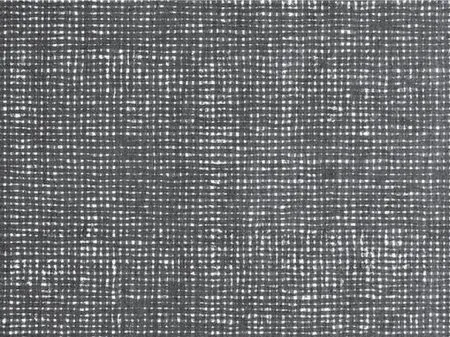
Figure 4. Li Huasheng: 0669 (subtitle: Spring, Summer, Autumn, and Winter) part, ink on paper, 2006

Figure 5. Wang Chuan: No.3, 69cm×69cm, ink on paper, 2010
His works during this period cannot be simply classified as being abstract or concrete. People define a work as “abstract” because the evidence in their eyes shows that the concrete image in the painting has been deliberately suppressed, controlled, disguised, or removed. The status of an abstract work is established because the concrete image “walks” on the edge of the picture, which is either a deviation or a deficiency (Leja, 2014). However, in Wang Chuan’s paintings, there is no such deviation or deficiency, but only his denial of the existence of “Lakṣaṇa ” (aka “nimitta”) at the very root. “I do not think being concrete or non-concrete matters much. What truly matters is how you paint. Now the images and ‘nimittas’ in my ink paintings and oil paintings come to be overlapped and complementary to each other. The two had better be integrated into a consistent one to be carried on in a purer and simpler way. Anyway, all Lakṣaṇa are, without exception, virtual.①Li Xianting dialogue with Wang Chuan, https://mp.weixin.qq.com/s/iAi8k-xxrBPoOtoStdaHcg, retrieved at 20:30,6 May 2020.Even the meaning of painting was denied by him. ” If I reach the image that I feel, it immediately comes to an end, because it is an illusion, after all. Painting is but an illusion, a visual illusion” (Wang, 2020).
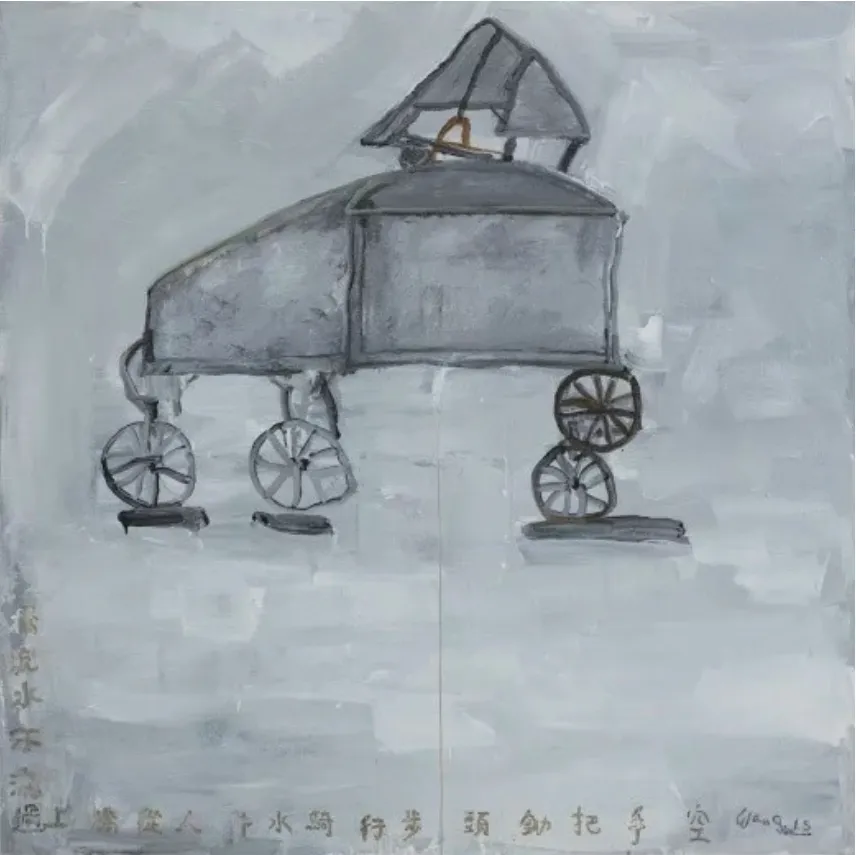
Figure 6. Wang Chuan: Walking House, 200cm×200cm, canvas oil painting, 2015
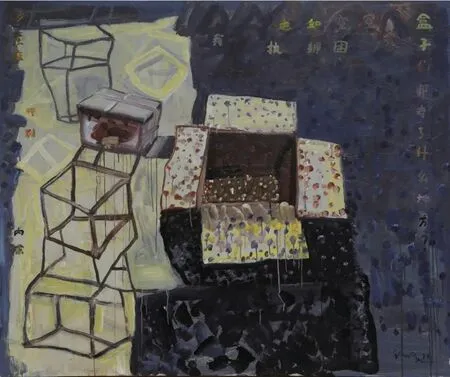
Figure 7. Wang Chuan: Songzhuang Artist Village No.17, 162cm×194cm, canvas oil painting, 2016
There is an illusion to Buddhism about the “thunder of silence” in the Vimalakirti Sutra. It is because languages are obscure and cumbersome, unable to represent realities, and easy to make people cling to their linguistic differences that Vimalakirti remained silent. This silence was like thunder in the quiet sky, waking up the laity present and enabling them to give up linguistic symbols to experience the truth. The same is true of Wang Chuan’s paintings. He tries to restrain the operation of intelligence with the readability of the picture structure and the possibility of schema. With a simple stroke, he takes away words, denies images, and leaves nothing but wordless words and image-less images. Hence, Wang Chuan’s abstract painting coincides with the development trend of contemporary Zen ink painting. “Given the increasingly diversified trends of contemporary ink painting, it is justified to conclude that the future Zen ink painting will be an artistic concept without deliberate understanding, that is, a concept-less concept of art” (Wang, 2015).
Evaluation of Wang Chuan’s Zen Ink Painting Art
Art is an expression of metaphor, which is known as “idea beyond words” in the Chinese context. By analyzing Wang Chuan’s works, we can confirm that Zen ink painting is about “idea beyond pictures” in contemporary artistic creation. In such a painting genre, the schema is the carrier of perception and reveals the Buddha-nature with abstract meaning. Therefore, paintings often reveal the meaning of internal deconstruction, from which exudes a clear spirit. There is no pure form of Zen ink painting, and the form itself is rich in information. This is an artist’s inspiration to the audience and a symbol of spiritual enlightenment, which shows the core of Buddhism, and the artist’s cultivated perception and religious personality. As it connects art to philosophy, and picture to religion, the artistic creation of Zen ink painting reflects the commonness of all artistic works, which is what Clive Bell calls “significant form.”①Clive Bell (1881-1964) was a British formalist aesthetician and theoretical spokesperson of contemporary Western formalist art. His representative work Art embodies his formalism theory.
The significance of Wang Chuan’s paintings comes from the influence of Buddhism. Thus, his paintings are away from ordinary abstract paintings, different in both content and form. However, we cannot simply classify this style as a religious art because the theme of his paintings is not salvation, and because his motivation for creation has nothing to do with missionary work. There is no tendency to praise or worship the almighty power of the object of his faith. Besides, a careful examination of Wang Chuan’s artistic expression reveals no frequent depiction of religious concepts, emotions, and symbols, and no emphasis on religion. The formal personal language born out of the artist’s religious inspiration is the very essence of his paintings.
It is precisely because Wang Chuan’s art is rooted in the introspection inspired by meditation that his paintings emphasize the exploration and transformation of the inner world. Thanks to his spiritual harmony, the Western method of abstract expressionist painting, the epistemological thought of Zen, and the traditional spirit of ink painting have come together to generate the effect of complementary innovation. Its schema development is not broken or chaotic but presents a regular diachronic expression, which, however, does not mean that relevant research on the regular pattern of its schema development can be carried out by mechanically applying various Buddhist proprietary concepts and academic terms from art history. Yet this is exactly the common problem of many scholars who study Zen ink painting. They tend to weave their own research with a discourse art that is stuffed with speculative or academic flavor. Specifically, they summarize the artistic process as a journey from “emptiness” to “perfect accommodation” or from “no Lakṣaṇa” to “Upekṣā” (Buddhist concept of equanimity), and the artistic schema as the deconstruction of “no words” or the minimalism of “emptiness.” Such piecing-together research is superficial because it does not seem to realize that the basis of Zen ink painting is the “transformation of the artist’s personal life.” If the research is not based on the artist’s understanding of religion and art but only focuses on the expression of religious thoughts and artistic techniques in the artist’s works, then such research can easily fall into a stereotype.
Consequently, we may summarize and comment on the characteristics of Wang Chuan’s Zen ink art in the 21st century as follows: With the help of Zen, Wang Chuan has developed an understanding of the inner world through the negation of the Lakṣaṇa. In fact, the mainline of his painting has been about the cognitive relationship between “Lakṣaṇa” and “heart.” Wang Chuan has abandoned the consensus of traditional art that the “art depicts and records the images,” shifted his attention to “art’s transformation and renewal of ideas,” and found an innovative expression of Zen ink painting. Moreover, for Wang Chuan, “Zen” is not metaphysics at the ontological level but the perceptual experience at the epistemological level. The purpose of Zen epistemology, i.e., “to point straight at mind of man, see your nature and be enlightened” has been transformed into his artistic ontology, i.e., “to leave laksana for heart.” Because of this deep reflection, the audience does not misunderstand the obscurity of his paintings as mysticism. In his paintings, two types of Buddhist patterns display alternately: The “no Lakṣaṇa,” which breaks through the rational, materialistic logic behind Western formalist aesthetics, and the Upekṣā, which inherits the charm of Oriental aesthetics born out of the heart of the artist.
Conclusion
Under the environment of Chinese contemporary art, Zen ink painting constantly absorbs Eastern and Western ideological resources and artistic forms and seeks a balance between tradition and modernity. Wang Chuan is a contemporary practitioner of Zen ink painting. While trying to maintain the traditional spirit, he strives to make breakthroughs in concepts, forms, and media materials. His artistic practice process is accompanied by the gradual integration of Zen Buddhism into his spirit, which finally leads to his unique Zen ink art style.
 Contemporary Social Sciences2021年6期
Contemporary Social Sciences2021年6期
- Contemporary Social Sciences的其它文章
- A Study of the European Union’s Path for Constructing Digital Governance Rules and the Logical Implications of the Path
- 《当代社会科学(英文)》稿件格式参考
- Does Environmental Regulation Increase Employment? Based on the SCM and RCM Methods
- The Influence of Sichuan–Tibet Railway on the Accessibility and Economic Development of City Propers along the Line: Taking Chengdu and Ya’an as Examples
- A Study of Feminine Space in Romance of the Three Kingdoms
- A Study of Idiom Translation in Bonsall’s The Red Chamber Dream
